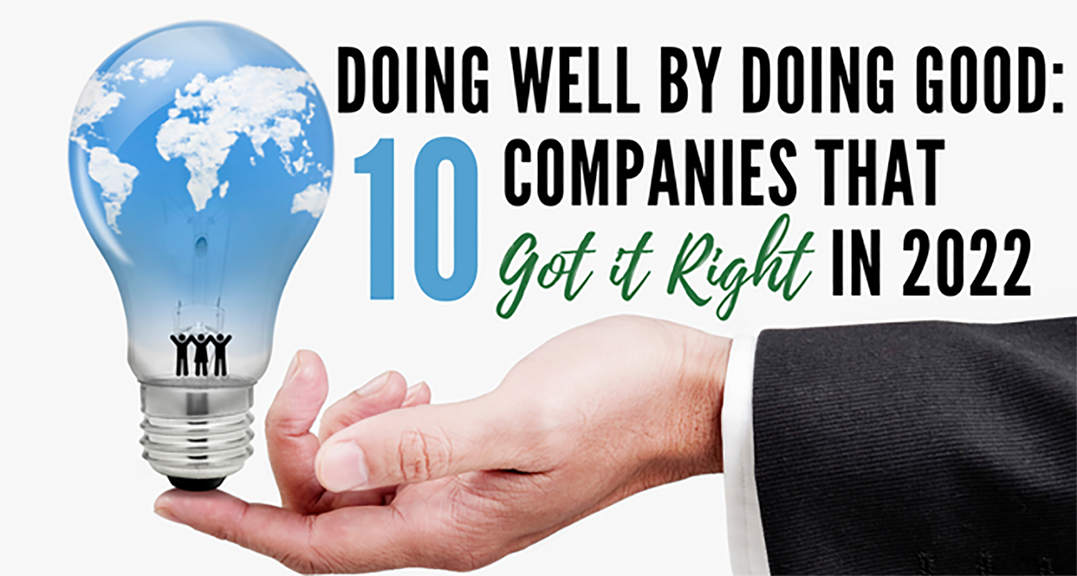
Employee Engagement, Leadership
The strongest organizations in the world achieve sustainable success largely because they understand the value of culture as a competitive advantage. Whether you nurture it or not, you have a culture. It may be empowering or toxic. Either way, the results are showing up on your bottom line.
Here are the 10 companies we featured in CEE News this year that show how doing well and doing good are not mutually exclusive. Fun fact: 8 out of 10 of these companies were lead by women CEOs when we featured them.
1. Twist Bioscience, Emily Leproust, CEO
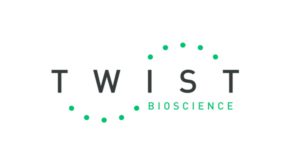 When Dr. Emily Leproust helped launch Twist Bioscience in 2013, she did so with the belief that synthetic DNA would be critical to solving many of the world’s biggest challenges. When SARS-CoV-2 became one of those challenges in early 2020, her team tapped into their guiding principles of Grit, Impact, Service, and Trust to fight the pandemic head on.
When Dr. Emily Leproust helped launch Twist Bioscience in 2013, she did so with the belief that synthetic DNA would be critical to solving many of the world’s biggest challenges. When SARS-CoV-2 became one of those challenges in early 2020, her team tapped into their guiding principles of Grit, Impact, Service, and Trust to fight the pandemic head on.
Headquartered in San Francisco, Twist produces synthetic viral controls that resemble SARS-CoV-2 variants to enable researchers to rapidly develop and validate diagnostic tests. Just weeks after the Omicron variant was identified, Twist launched a new control to match the need. [Read More]
2. Carbon, Ellen Kullman, CEO
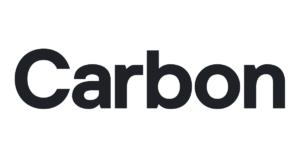
When Comparably released its Top 100 highest-rated companies for Best Company Culture in 2021, Carbon ranked #10. The 3D printing technology company headquartered in Redwood City, CA, models the idea that diversity —not just of knowledge and expertise, but of identity—is a key driver of productivity and innovation. [Read More]
3. EQrx, Melanie Nallicheri, CEO
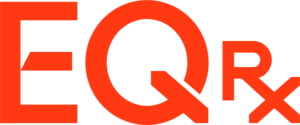 A 2021 study released by AARP found that “retail prices for widely used brand name prescription drugs increased substantially faster than general inflation in every year from 2006 to 2020.” For people who are already vulnerable, the cost of drugs ends up being a major obstacle to care that often leads them to abandon treatment midway or avoid seeking it altogether. That’s a wrong that EQRx Cambridge, MA) is determined to right. [Read More]
A 2021 study released by AARP found that “retail prices for widely used brand name prescription drugs increased substantially faster than general inflation in every year from 2006 to 2020.” For people who are already vulnerable, the cost of drugs ends up being a major obstacle to care that often leads them to abandon treatment midway or avoid seeking it altogether. That’s a wrong that EQRx Cambridge, MA) is determined to right. [Read More]
4. Wildbit, Natalie Nagele, CEO
 The job of a CEO is to make sure that the time that employees spend at their job is net positive. That’s according to Natalie Nagele, Co-Founder and CEO of Wildbit. Since taking on the leadership role in 2004, Nagele has been committed to proving that you can grow a profitable company while prioritizing people. She has led the creation of multi-million dollar products while focusing on her belief that business should be human. It’s a people-first approach that is deeply embedded in the company’s DNA. [Read More]
The job of a CEO is to make sure that the time that employees spend at their job is net positive. That’s according to Natalie Nagele, Co-Founder and CEO of Wildbit. Since taking on the leadership role in 2004, Nagele has been committed to proving that you can grow a profitable company while prioritizing people. She has led the creation of multi-million dollar products while focusing on her belief that business should be human. It’s a people-first approach that is deeply embedded in the company’s DNA. [Read More]
5. Bitwise Industries, Irma Olguin, Jr., CEO
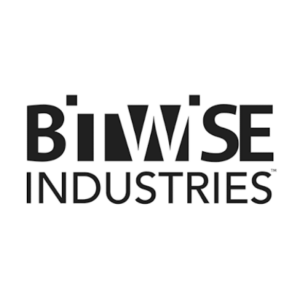
Bitwise Industries was founded in 2013 with the mission of uplifting people from disadvantaged backgrounds and/or coming from systemic poverty by creating pathways into the technology industry. Bitwise builds tech ecosystems focused on activating human potential in America’s poorest zip codes through three key areas: Workforce, Industry, and Infrastructure. [Read More]
6. Bobbie, Laura Modi, CEO
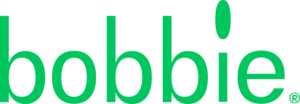 When Laura Modi and Sarah Hardy formed the organic-formula company Bobbie in 2019, they had two babies and two toddlers between them. The co-founders were not single 20-somethings pulling all-nighters in somebody’s basement. They were working moms who needed to create an environment in which working parents could be successful.
When Laura Modi and Sarah Hardy formed the organic-formula company Bobbie in 2019, they had two babies and two toddlers between them. The co-founders were not single 20-somethings pulling all-nighters in somebody’s basement. They were working moms who needed to create an environment in which working parents could be successful.
As Airbnb alumnae well-versed in rapid growth startups, they were determined not to prioritize growth over culture. The co-founders dedicated themselves to building a diverse and inclusive culture with amazing benefits. Hiring consumed half their working hours in 2021, as they grew Bobbie from 10 employees to 46 across 16 states. Of today’s 55 employees, 91% are women and 70% are parents. [Read More]
7. Textio, Kieran Snyder, CEO
 While many companies have struggled with their return-to-office plans since the pandemic, Textio, an augmented writing platform led by CEO Kieran Snyder, leveraged the opportunity to go fully remote. That decision has paid off in higher productivity, greater diversity, and Best Company to Work for recognition by Seattle Business Magazine. Snyder, a self-described recovering academic with a PhD in Linguistics and Cognitive Science from Penn, admitted that she was nervous about making the shift to fully remote. But, in the first year productivity was actually better than it had ever been before. [Read More]
While many companies have struggled with their return-to-office plans since the pandemic, Textio, an augmented writing platform led by CEO Kieran Snyder, leveraged the opportunity to go fully remote. That decision has paid off in higher productivity, greater diversity, and Best Company to Work for recognition by Seattle Business Magazine. Snyder, a self-described recovering academic with a PhD in Linguistics and Cognitive Science from Penn, admitted that she was nervous about making the shift to fully remote. But, in the first year productivity was actually better than it had ever been before. [Read More]
8. Hims & Hers, Andrew Dudum, CEO
 Digital health is an industry on a stratospheric trajectory. The coronavirus pandemic has only bolstered its ascent, lifting the prospects of companies that can offer virtual health services at a time when patients, and especially those at highest risk, simply can’t afford to go into a medical facility that’s filled with potential COVID-19 patients. Andrew Dudum was ahead of the curve on this one. While Hims (technically now Hims & Hers), began as a digital health startup geared toward men, it has since expanded its footprint to include women’s health via Hers, with telehealth services and products spanning mental health, primary care, and a variety of specific conditions ranging from erectile dysfunction to hair loss, acne, and beyond. [Read More]
Digital health is an industry on a stratospheric trajectory. The coronavirus pandemic has only bolstered its ascent, lifting the prospects of companies that can offer virtual health services at a time when patients, and especially those at highest risk, simply can’t afford to go into a medical facility that’s filled with potential COVID-19 patients. Andrew Dudum was ahead of the curve on this one. While Hims (technically now Hims & Hers), began as a digital health startup geared toward men, it has since expanded its footprint to include women’s health via Hers, with telehealth services and products spanning mental health, primary care, and a variety of specific conditions ranging from erectile dysfunction to hair loss, acne, and beyond. [Read More]
9. Bearaby, Kathrin Hamm, CEO
 Four years ago, Dr. Kathrin Hamm was among the 68% of Americans who say they have difficulty sleeping. Hamm was working as an economist with the World Bank, and, due to an increasingly demanding travel schedule, she suffered from chronic insomnia. She was burning out fast, and decided to matters into her own hands. After reviewing medical journals, Hamm learned about how weighted blankets were frequently used to bring comfort to children with sensory disorders and autism. She ordered one from a medical specialty store and it worked wonders to improve her sleep, but it was far from perfect. So in 2018, she took an entrepreneurial leap and launched Bearaby, determined to make weighted blankets that were cozy, beautiful and breathable. [Read More]
Four years ago, Dr. Kathrin Hamm was among the 68% of Americans who say they have difficulty sleeping. Hamm was working as an economist with the World Bank, and, due to an increasingly demanding travel schedule, she suffered from chronic insomnia. She was burning out fast, and decided to matters into her own hands. After reviewing medical journals, Hamm learned about how weighted blankets were frequently used to bring comfort to children with sensory disorders and autism. She ordered one from a medical specialty store and it worked wonders to improve her sleep, but it was far from perfect. So in 2018, she took an entrepreneurial leap and launched Bearaby, determined to make weighted blankets that were cozy, beautiful and breathable. [Read More]
10. Codility, Natalia Panowicz, CEO
 Imagine that you are a recruiter who’s been asked to fill a back-end developer position. You work with the hiring manager to post a job description to match the skills and experience needed, and 33 applicants’ resumes are a match. Now what? How do you pare down the candidates to help the hiring manager choose from among the top handful of candidates? In a word – Codility. Codility was founded by an engineer who wanted to spend more time coding and solving problems than interviewing dozens of candidates. Thirteen years, 200+ employees, and $22M in VC funding later, that initial concept evolved into an entirely new way of approaching tech recruiting. That gives over 30,000 talented people each month opportunities – wherever they’re based and whatever their background. [Read More]
Imagine that you are a recruiter who’s been asked to fill a back-end developer position. You work with the hiring manager to post a job description to match the skills and experience needed, and 33 applicants’ resumes are a match. Now what? How do you pare down the candidates to help the hiring manager choose from among the top handful of candidates? In a word – Codility. Codility was founded by an engineer who wanted to spend more time coding and solving problems than interviewing dozens of candidates. Thirteen years, 200+ employees, and $22M in VC funding later, that initial concept evolved into an entirely new way of approaching tech recruiting. That gives over 30,000 talented people each month opportunities – wherever they’re based and whatever their background. [Read More]
Kudos to all 10 of these amazing companies who understand the value of culture as a competitive advantage!
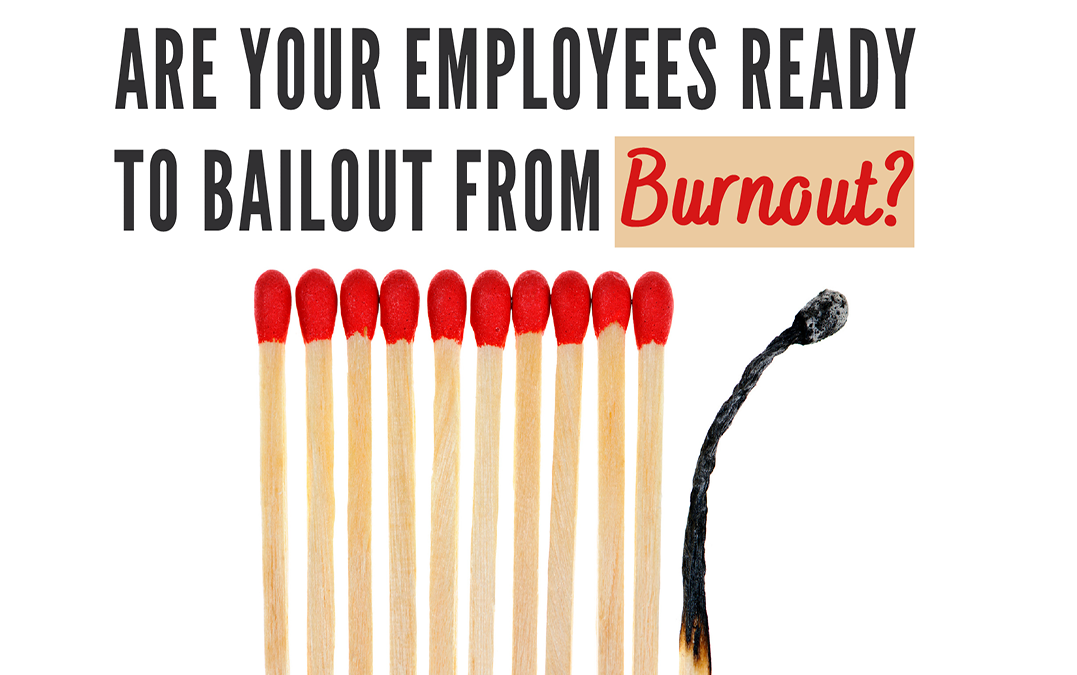
Employee Engagement
Last month, I called my go-to window washer to schedule a much-needed cleaning. I usually have this done twice every year, but…well, you know. He was booked solid for the next two weeks, but we managed to get the job scheduled. When he came to my house, I asked if he’d been extra busy with customers like me scheduling make-up window cleaning. “Yes,” he said, “I’ve had more back-to-back jobs in the last two months than I had all of last year.”
I had similar conversations with a landscaping crew, the dental hygienist, and the manager at my local dry cleaners. Everyone is happy to have plenty of work to do, but managing the sudden surge in demand while trying to deal with pandemic fatigue and get through the upcoming holiday season can set us up for a triple dose of mental drain this quarter.
If this is happening to me and the people who I’m running into personally, it’s likely happening to you and your team. Here are some guidelines for keeping your employees from bailing out from burnout.
1. Check-in. Instead of jumping right into Q3 reports, Q4 forecasts, and 2022 strategic planning, check in with your team members in one-on-one conversations by simply asking them how they are doing in the midst of all that’s going on. It may seem like such a small thing, but it can be surprisingly helpful. If you can provide a safe space to let your team members share what’s occupying their minds, they can feel calmer, clearer and better able to focus on other things.
2. Don’t fix. Just Listen. Listening sounds so simple, right? Hearing what the other person is saying is one thing, but really listening—listening for meaning, and how the other person is feeling—is something that takes discipline. As a manager, your brain may shift into “Let’s solve it” gear. When you’ve invited your team member to share what’s on their mind, this is not the time for a quick fix. Instead, listen to understand your team member’s feelings, then identify and acknowledge those feelings. Be supportive and nonjudgmental, whether your perspective matches theirs or not.
3. Keep extra passes handy. Now is the time to internalize that everyone you interact with is struggling, and in ways you may never fully understand. When you notice your team member acting in an atypical way, give them a pass. Assume that they are acting from a place of good intentions and don’t take it personally. This is not the time to flex your positional power. Instead, give them time to process, then repeat Step 1, above.
Under the best of circumstances, many of us struggle to navigate the Q4 crush. These are not the best of circumstances, and it’s more important than ever to model empathy and help your team members avoid burnout.
Question: How do you keep your employees from bailing out from burnout?
Driven by the premise that excellence is the result of aligning people, purpose and performance, Center for Executive Excellence facilitates training in leading self, leading teams and leading organizations. To learn more, subscribe to receive CEE News!
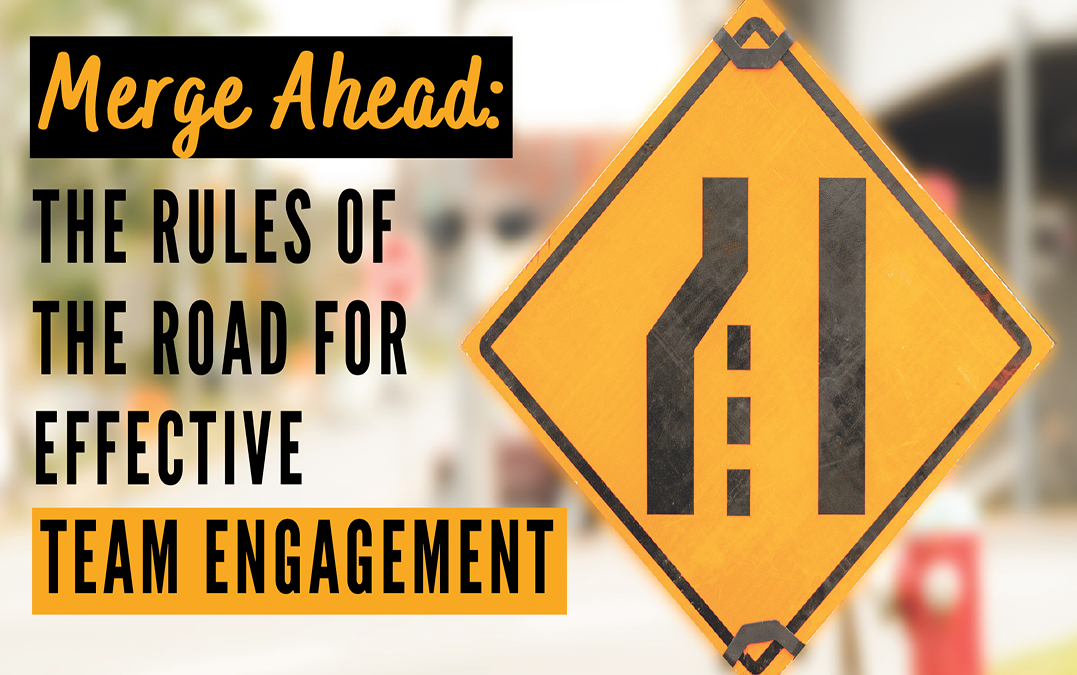
Culture, Employee Engagement
In order to get my driver’s permit as a teenager in Texas, I had to take a series of Saturday morning classes offered by my high school. After completing the classes, I needed at least 12 hours of driving practice accompanied by a licensed adult 21 years or older in the front passenger seat. Much to my mother’s horror, she was my designated adult passenger.
Luckily, Mom and I survived those practice drives, although the row of flowers she’d lovingly planted along our driveway paid the ultimate price. After I was issued a driver’s license by the State of Texas, I quickly learned that the written rules of driving were subject to interpretation. Merging, yielding, passing, and allowing others to pass meant very different things depending on whether I was negotiating rush hour traffic on I-45 or taking a weekend trip along the network of state routes and farm roads that connected small towns across the state.
When it comes to interacting with a group of people, it helps to establish a common set of guidelines for everyone’s safety. For teams, guidelines lay out how you are going to connect with one another, how you can create a space for everyone to contribute comfortably, and how to be individually vulnerable to make the collective outcome stronger. Here are some “I will…” recommendations for teams that want to create the rules of the road to improve engagement.
1. I will respect confidentiality. Every team needs to be able to invoke confidentiality when sensitive issues arise. The team needs to be able to have open and frank discussions without worrying about whether I will leak what is said to other coworkers.
2. I will be fully present. If an issue arises that can’t be covered in an email, I commit my full attention to what’s being discussed. I will resist the temptation to multi-task or respond to cell phone notifications during team meetings.
3. I will ask for what I need. I will assume responsibility for asking for what I need to be successful in my role. Nobody is a mind reader. So, if I need something, I will ask for help getting my needs met instead of waiting for someone else to figure out what I’m missing.
4. I will not assume my perspective is everyone’s reality. My perspectives are shaped by my beliefs, opinions, experiences, and unconscious biases. They’re how I view the world. Owning my perspective is part of speaking my truth. That said, it doesn’t mean my perspective is always right or true. It’s just what’s true for me.
5. I will have the courage to be imperfect. Learn to fail or fail to learn is a framework for a growth (rather than fixed) mindset. Mistakes come with being human, so I will admit my mistakes and course correct, where possible, as soon as possible.
Teams that honor and model a set of rules of the road both individually and collectively will create a mutual sense of safety and move forward faster.
Question: What are some of the rules of engagement on your team? Are they healthy?
Employee Engagement
Today’s organizations are fighting a workforce trifecta of facts. Fact 1: There are a million more job openings in the U.S. than workers to fill them. Fact 2: The employee quit rate in the U.S. has hit a 17-year high. Fact 3: Workplace burnout is being upgraded by the World Health Organization in its International Classification of Diseases. In short, managers are trying to get more done with fewer people at a greater risk to their own health.
It gets worse. A study by Harvard Business School found that more than half of a manager’s time is spent on administrative tasks and only 7% of their time (about 2.8 hours per week) is spent on developing people and engaging with stakeholders. After engaging stakeholders, developing people is likely closer to 1 hour per week. This chronic lack of time spent on employee development is equivalent to the phenomenon known as ghosting which perpetuates both the quit rate and burnout rate. To break this cycle, the role and purpose of today’s managers must change in three fundamental ways:
From controlling to coaching. While the world’s workplaces have been going through extraordinary historical change, the practice of management has been stuck in time for more than 30 years. The new workforce — especially younger generations — wants their work to have deep mission and purpose, and they don’t want old-style command-and-control bosses. They want coaches who inspire them, communicate with them frequently and develop their strengths.
From deciding to delegating. Too many managers don’t let direct reports make decisions for fear that mistakes will take too much valuable time to correct. This tendency restricts employees’ ability to develop their thinking and decision making which is exactly what is needed to help organizations remain competitive. Today’s managers don’t need to be the smartest person in the room. They need to tap into the collective intelligence and draw out everyone’s best thinking.
From ‘what works’ to ‘what if’. Managers often encourage predictability. They want processes in place that can be referred to regardless of who is in the role. The problem with this management style is that it leads to perpetuating the status quo at the expense of what is possible. Today’s managers don’t need hired hands to turn raw materials into products. They need hearts and minds that are challenged to find better ways to operate, to discover ways to grow, and to reimagine how things have been done in the past.
Today’s managers play a critical role in helping your organization adapt to the new workplace demands. Help them succeed by reimagining them as coaches who encourage critical thinking and curiosity.
Question: Do your managers spend more time reporting to senior leaders or coaching emerging ones?
Driven by the premise that excellence is the result of aligning people, purpose and performance, Center for Executive Excellence facilitates training in leading self, leading teams and leading organizations. To learn more, subscribe to receive CEE News!
Employee Engagement
Once upon a long, long time ago, it was good to be king. Being an unchallenged leader was so good, in fact, that the top-down, command-and-control organizational model that sprung from the banks of the Tigris and Euphrates rivers when the Mesopotamians first used mass labor to irrigate crops remained relatively unchanged for the next 6,000 years.
In early 20th century America, researchers began studying the impact of managerial behavior on employee productivity in organizations. The video titled (I kid you not) The Year They Discovered People documents studies conducted in the 1920s on workers at the Hawthorne plant of the Western Electric Company in partnership with Harvard Business School. The research first focused on environmental factors, like better lighting, that would result in a more responsive, efficient workforce. Much to the surprise of the researchers, however, was the finding that social factors played a larger role in workforce efficiency than environmental factors. The Hawthorne studies found that manufacturing workers who received additional attention from their managers felt that they were cared about as human beings. Social factors were, in fact, equally important to financial motives – at a time when the average pay was 50 cents per hour.
Fast forward 100 years. Information is the new raw material. Survival in the 21st century information economy means turning information into knowledge, and knowledge into insight at lightning speed. We know that organizational structures still slogging in Mesopotamian mud are doomed for extinction. Somewhere between a purely bureaucratic organizational structure and the notion that every human wants to contribute to something greater than themselves, however, is the question of how to balance organizational structure with flexibility, fluidity, and role ambiguity. You’re probably familiar with the holacracy model famously adopted by Zappos in 2014. Here are two more examples of how far the pendulum can swing from bureaucracy that you may not have heard of:
TEAL Organizations.
What’s the theory? As human consciousness evolves, so do our organizational systems. The Teal theory shifts from external measures of success to intrinsic needs along a color-based motivational scale. It’s less important if we get what we want (Red), we conform to social norms (Amber), we are effective and successful (Orange) or that we belong and have a say (Green). Now, humans are motivated by Teal — Does it feel good? Am I being my true self? What is right for me to do? Am I being in service to the world? In Teal, obstacles are life’s way of teaching us about ourselves and the world. We embrace the possibility that we were part of creating the problem.
How are they structured? Small teams take responsibility for their own governance and for how they interact with other parts of the organization. Assigned positions and job descriptions are replaced with a multiplicity of roles, often self-selected and fluid.
What’s radically different? No job descriptions, no targets, few budgets. In their place are soulful practices that enable extraordinarily productive and purposeful organizations. People’s actions are guided not by orders from someone up the chain of command but by ‘listening’ to the organization’s purpose.
What company is successfully using this structure? The Morning Star Company
Where can I read more? Reinventing Organizations, by Fredric Laloux
Adhocracy.
What’s the theory? Employees are encouraged to tap into their entrepreneurial nature, initiate new projects, and choose which of them to work on. Self-selected teams emerge spontaneously where the most exciting opportunities appear to be rather than according to a strategic plan or a product development roadmap.
How is it structured? Instead of projects coming to established teams, teams converge around projects. These are highly collaborative and mostly temporary structures. Their edge comes from the ability to form links both inside and outside an organization. These nimble groups come together around a specific task, recruiting personnel, assigning roles, and establishing objectives. When the work is done they disband their members and take their skills to the next project.
What’s radically different? If a project launch fails, employees move to other, more promising projects. As a result, the organization is market focused—its model resembles that of a venture capitalist: it invests only when it sees a clear pathway toward a commercially viable product.
What company is successfully using this structure? Mundipharma
Where can I read more? All Edge: Inside the New Workplace Networks, by Clay Spinuzzi
Traditional management goes wrong when one powerful individual prescribes what must be done—or how—because of their positional role, not because he or she has more insight into what will produce the desired outcome. Self-managed organization models strip away much of the top-down hierarchical power, and favor process over structure to get the job done.
Compared to 6,000 years of bureaucracy, models like holacracy, teal, and adhocracy are still in their infancy. The next generation of self-managed teams will require leaders with the vision to recognize the limitations of hierarchy, and defend the structure that serves the organization’s strategic goals.
Question: What’s the best mashup of hierarchy and self-managed teams?
Driven by the premise that excellence is the result of aligning people, purpose and performance, Center for Executive Excellence facilitates training in leading self, leading teams and leading organizations. To learn more, subscribe to receive CEE News!
Employee Engagement, Leadership
In the past, business success was all about size. Today, it’s all about speed. But with speed, comes change, and change, as we know, creates fear. People don’t like change because it’s disruptive. Employees begin to disengage as they struggle to define where they fit in or fear that they may become obsolete.
Disengagement doesn’t come cheap. Each year, companies spend hundreds of millions of dollars in an effort to improve an estimated $550 billion annual impact to the U.S. economy in lost productivity. The latest research by Gallup shows that nearly 68% of American workers are disengaged. Clearly, the dollars being thrown at this issue are making a paltry impact at best.
From productivity to profitability, from safety to shrinkage, employee engagement is not a philosophical exercise. It has bottom line implications.
Employee engagement is both potential and kinetic in nature. You likely recall potential and kinetic energy demonstrated by Wile E. Coyote in his thwarted attempts to capture the elusive roadrunner. Potential energy is stored by an object – perhaps a giant spring or over-sized mousetrap. The object is loaded and ready for action. Kinetic energy is related to the object’s motion – like a coyote arrow launched by a bow.
The same is true of employees. Engaged employees have both stored and activated energy. Stored energy comes from having both meaningful work and aligned goals. Activated energy is an employee’s ability to tap into his or her strengths and the learning and growth afforded on the job. Together, they make up four pieces of the engagement puzzle. Here’s a breakdown of each piece:
1. Meaningful work. Do your employees know the value your organization brings? Regardless of whether you are a non-profit or for profit enterprise, everyone in your organization should be passionate about your why. As Simon Sinek argues in his popular TED Talk, people want more than a paycheck. They want to be a part of something greater than themselves.
2. Aligned goals. Next, employees need to move from the why to the what. The sooner you can connect your strategic objectives with employee goals and rewards, the better chance you have of turning your strategic plan from theory into reality. Help employees see how their daily jobs impact goals such as profit margins or market share.
3. Strengths-focused. At this point, your employees are spring loaded and ready to move onto the how. Depending on whether you focus on improving employees’ weaknesses or leveraging their strengths, you can either thwart their enthusiasm or thrust them into action. Gallup research shows that the best way for employees to grow and develop is to leverage their natural talents to perform at their highest potential.
4. Learning and Growth. Employees under the age of 25 rate professional development as their number one driver of engagement, and workers up to age 35 rate it as the number two priority. As employees get older, their focus on development shifts away from mobility in favor of aligning a job with long-term career goals. Create an environment that gets people engaged and keeps them engaged by providing opportunities to grow and advance.
While 90% of executives understand the importance of employee engagement, fewer than 50% understand how to address this issue. Design an organization that thrives on turning potential energy into kinetic energy by focusing on the four pieces of the engagement puzzle.
Question: In which of the four pieces of the engagement puzzle does your organization excel? Where could you use improvement?
Driven by the premise that excellence is the result of aligning people, purpose and performance, Center for Executive Excellence facilitates training in leading self, leading teams and leading organizations. To learn more, subscribe to receive CEE News!

 When Dr. Emily Leproust helped launch Twist Bioscience in 2013, she did so with the belief that synthetic DNA would be critical to solving many of the world’s biggest challenges. When SARS-CoV-2 became one of those challenges in early 2020, her team tapped into their guiding principles of Grit, Impact, Service, and Trust to fight the pandemic head on.
When Dr. Emily Leproust helped launch Twist Bioscience in 2013, she did so with the belief that synthetic DNA would be critical to solving many of the world’s biggest challenges. When SARS-CoV-2 became one of those challenges in early 2020, her team tapped into their guiding principles of Grit, Impact, Service, and Trust to fight the pandemic head on.
 A 2021 study released by AARP found that “retail prices for widely used brand name prescription drugs increased substantially faster than general inflation in every year from 2006 to 2020.” For people who are already vulnerable, the cost of drugs ends up being a major obstacle to care that often leads them to abandon treatment midway or avoid seeking it altogether. That’s a wrong that EQRx Cambridge, MA) is determined to right. [Read More]
A 2021 study released by AARP found that “retail prices for widely used brand name prescription drugs increased substantially faster than general inflation in every year from 2006 to 2020.” For people who are already vulnerable, the cost of drugs ends up being a major obstacle to care that often leads them to abandon treatment midway or avoid seeking it altogether. That’s a wrong that EQRx Cambridge, MA) is determined to right. [Read More]  The job of a CEO is to make sure that the time that employees spend at their job is net positive. That’s according to Natalie Nagele, Co-Founder and CEO of Wildbit. Since taking on the leadership role in 2004, Nagele has been committed to proving that you can grow a profitable company while prioritizing people. She has led the creation of multi-million dollar products while focusing on her belief that business should be human. It’s a people-first approach that is deeply embedded in the company’s DNA. [Read More]
The job of a CEO is to make sure that the time that employees spend at their job is net positive. That’s according to Natalie Nagele, Co-Founder and CEO of Wildbit. Since taking on the leadership role in 2004, Nagele has been committed to proving that you can grow a profitable company while prioritizing people. She has led the creation of multi-million dollar products while focusing on her belief that business should be human. It’s a people-first approach that is deeply embedded in the company’s DNA. [Read More]  When Laura Modi and Sarah Hardy formed the organic-formula company Bobbie in 2019, they had two babies and two toddlers between them. The co-founders were not single 20-somethings pulling all-nighters in somebody’s basement. They were working moms who needed to create an environment in which working parents could be successful.
When Laura Modi and Sarah Hardy formed the organic-formula company Bobbie in 2019, they had two babies and two toddlers between them. The co-founders were not single 20-somethings pulling all-nighters in somebody’s basement. They were working moms who needed to create an environment in which working parents could be successful. While many companies have struggled with their return-to-office plans since the pandemic, Textio, an augmented writing platform led by CEO Kieran Snyder, leveraged the opportunity to go fully remote. That decision has paid off in higher productivity, greater diversity, and Best Company to Work for recognition by Seattle Business Magazine. Snyder, a self-described recovering academic with a PhD in Linguistics and Cognitive Science from Penn, admitted that she was nervous about making the shift to fully remote. But, in the first year productivity was actually better than it had ever been before. [Read More]
While many companies have struggled with their return-to-office plans since the pandemic, Textio, an augmented writing platform led by CEO Kieran Snyder, leveraged the opportunity to go fully remote. That decision has paid off in higher productivity, greater diversity, and Best Company to Work for recognition by Seattle Business Magazine. Snyder, a self-described recovering academic with a PhD in Linguistics and Cognitive Science from Penn, admitted that she was nervous about making the shift to fully remote. But, in the first year productivity was actually better than it had ever been before. [Read More] ![]() Digital health is an industry on a stratospheric trajectory. The coronavirus pandemic has only bolstered its ascent, lifting the prospects of companies that can offer virtual health services at a time when patients, and especially those at highest risk, simply can’t afford to go into a medical facility that’s filled with potential COVID-19 patients. Andrew Dudum was ahead of the curve on this one. While Hims (technically now Hims & Hers), began as a digital health startup geared toward men, it has since expanded its footprint to include women’s health via Hers, with telehealth services and products spanning mental health, primary care, and a variety of specific conditions ranging from erectile dysfunction to hair loss, acne, and beyond. [Read More]
Digital health is an industry on a stratospheric trajectory. The coronavirus pandemic has only bolstered its ascent, lifting the prospects of companies that can offer virtual health services at a time when patients, and especially those at highest risk, simply can’t afford to go into a medical facility that’s filled with potential COVID-19 patients. Andrew Dudum was ahead of the curve on this one. While Hims (technically now Hims & Hers), began as a digital health startup geared toward men, it has since expanded its footprint to include women’s health via Hers, with telehealth services and products spanning mental health, primary care, and a variety of specific conditions ranging from erectile dysfunction to hair loss, acne, and beyond. [Read More]  Four years ago, Dr. Kathrin Hamm was among the 68% of Americans who say they have difficulty sleeping. Hamm was working as an economist with the World Bank, and, due to an increasingly demanding travel schedule, she suffered from chronic insomnia. She was burning out fast, and decided to matters into her own hands. After reviewing medical journals, Hamm learned about how weighted blankets were frequently used to bring comfort to children with sensory disorders and autism. She ordered one from a medical specialty store and it worked wonders to improve her sleep, but it was far from perfect. So in 2018, she took an entrepreneurial leap and launched Bearaby, determined to make weighted blankets that were cozy, beautiful and breathable. [Read More]
Four years ago, Dr. Kathrin Hamm was among the 68% of Americans who say they have difficulty sleeping. Hamm was working as an economist with the World Bank, and, due to an increasingly demanding travel schedule, she suffered from chronic insomnia. She was burning out fast, and decided to matters into her own hands. After reviewing medical journals, Hamm learned about how weighted blankets were frequently used to bring comfort to children with sensory disorders and autism. She ordered one from a medical specialty store and it worked wonders to improve her sleep, but it was far from perfect. So in 2018, she took an entrepreneurial leap and launched Bearaby, determined to make weighted blankets that were cozy, beautiful and breathable. [Read More]  Imagine that you are a recruiter who’s been asked to fill a back-end developer position. You work with the hiring manager to post a job description to match the skills and experience needed, and 33 applicants’ resumes are a match. Now what? How do you pare down the candidates to help the hiring manager choose from among the top handful of candidates? In a word – Codility. Codility was founded by an engineer who wanted to spend more time coding and solving problems than interviewing dozens of candidates. Thirteen years, 200+ employees, and $22M in VC funding later, that initial concept evolved into an entirely new way of approaching tech recruiting. That gives over 30,000 talented people each month opportunities – wherever they’re based and whatever their background. [Read More]
Imagine that you are a recruiter who’s been asked to fill a back-end developer position. You work with the hiring manager to post a job description to match the skills and experience needed, and 33 applicants’ resumes are a match. Now what? How do you pare down the candidates to help the hiring manager choose from among the top handful of candidates? In a word – Codility. Codility was founded by an engineer who wanted to spend more time coding and solving problems than interviewing dozens of candidates. Thirteen years, 200+ employees, and $22M in VC funding later, that initial concept evolved into an entirely new way of approaching tech recruiting. That gives over 30,000 talented people each month opportunities – wherever they’re based and whatever their background. [Read More]


